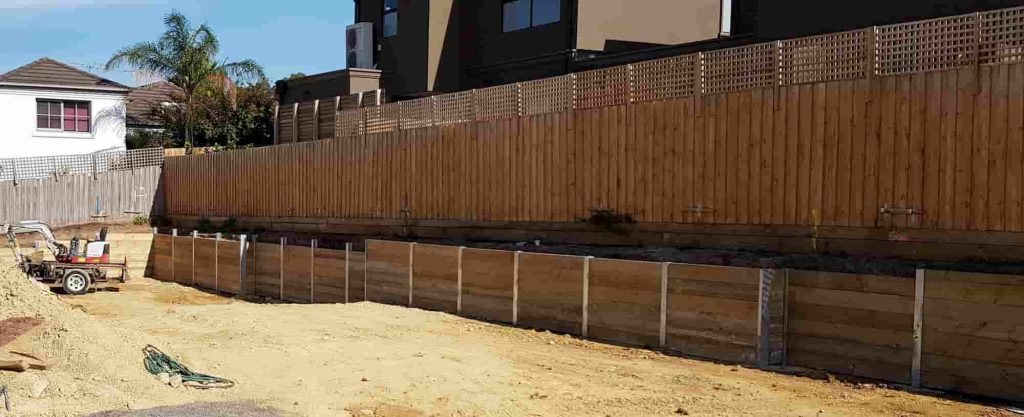Introduction
When it pertains to home improvement and landscaping, lots of elements come into play. Among the most important components is the retaining wall. It not just serves practical functions however likewise improves the visual appeal of your property. But have you ever questioned the function of a retaining wall contractor? In this short article, we'll check out how these professionals exceed mere building, making sure that your maintaining wall stands strong and looks fantastic for years to come.
Retaining walls are essential for preventing soil erosion, managing water runoff, and producing level surface areas in sloped areas. A retaining wall installer or builder need to have a mix of technical knowledge, creativity, and job management abilities to provide an optimal service tailored to your specific needs.
The Function of a Retaining Wall Contractor: More Than Simply Building
A retaining wall contractor does far more than simply hammer away at bricks and concrete. They are involved in every element of the task-- from the initial assessment to the last touches that make the setup truly shine. Let's dive deeper into their responsibilities.
Understanding Customer Needs
The initial step in any project is comprehending what the client wants. A great specialist will sit down with you to discuss your vision, expectations, and budget.
- What's Your Vision? Is it an easy stone wall for visual appeal? Or do you need something more robust like a concrete sleeper wall for structural support? What's Your Budget? Understanding monetary restraints helps tailor solutions that fit both requirements and wallet.
Site Assessment
Before breaking ground, a comprehensive evaluation of the website is crucial:
- Soil Analysis: The kind of soil impacts how well a wall will hold up. Drainage Factors to consider: Water management is critical in maintaining the stability of the wall over time.
Designing the Maintaining Wall
Once client needs are comprehended and website assessments are completed, the enjoyable part begins-- designing!
Choosing Products Wisely
Different products serve various purposes:
- Concrete Sleepers: Long lasting and versatile. H Beams: Best for sturdy applications. Wood Sleeper: Supplies natural visual appeals however requires maintenance. Timber Sleeper: Similar to wood however with added treatments for longevity. Stone Walls: Visually pleasing but can be cost-prohibitive.
Planning Regulations
Every region has its own building regulations and regulations concerning keeping walls:
- Permits Required? A respectable specialist will help browse this complex landscape. Zoning Laws: Knowing what's permitted will conserve headaches later on.
Engineering Calculations
A strong structure is crucial to any successful retaining wall. Engineers work alongside professionals to guarantee:
- Proper load calculations Appropriate drain solutions
Preparation and Excavation
Preparation involves cleaning debris and excavating as required:
Mark out where the wall will go. Dig trenches if necessary. Prepare base layers for stability.Installation Process
With whatever planned, it's time for installation!


Laying Foundations
A strong foundation involves multiple layers:
Base gravel Geotextile fabric Layering stones or blocksBuilding Upwards
Once the structure is set, walls begin taking shape:
- Stacking methods vary based upon materials. Proper alignment makes sure aesthetics and functionality.
Incorporating Drainage Solutions
Effective drainage avoids water accumulation behind walls, which can result in failure:
Weep holes Drainage pipes Gravel backfillFinishing Touches
What good is a gorgeous wall if it does not blend with your landscape?
Landscaping Around Maintaining Walls
Adding plants or decorative stones can enhance visual appeal:
Native plants for sustainability Decorative rock featuresFAQ Section
1. What kinds of materials do keeping wall specialists use?
Contractors generally use concrete sleepers, wood sleepers, timber sleepers, H beams, or stone depending on your needs and budget.
2. How long does it take to construct a keeping wall?
The timeline varies based on size and material; normally, anticipate anywhere from a couple of days to numerous weeks.
3. Do I require authorizations for constructing a maintaining wall?
Yes! The majority of areas require licenses due to zoning laws; constantly talk to your contractor relating to local regulations.
4. Can I set up a keeping wall myself?
While DIY might seem tempting, working with a knowledgeable professional guarantees appropriate setup that stands over time.
5. What maintenance do keeping walls require?
Maintenance can include checking drainage systems regularly and changing any damaged sections as needed.
6. What takes place if my maintaining wall fails?
A failing keeping wall can trigger considerable concerns like soil disintegration or residential or commercial property damage; it's finest addressed instantly by professionals.
Conclusion
In summary, when considering installing a maintaining wall on your property, it's clear that working with a skilled retaining wall https://anotepad.com/notes/cx375kbe contractor deals more than just physical construction; they bring know-how in style, engineering principles, regional policies compliance, site management abilities-- and far more! From conception through conclusion-- and even beyond-- they're integral in crafting functional yet aesthetically appealing structures that withstand time's test while boosting home value.
So next time you're thinking about adding among these necessary structures to your landscape, keep in mind: The function of a retaining wall contractor is undoubtedly much greater than just developing; it has to do with developing enduring quality while making sure safety and appeal link seamlessly!